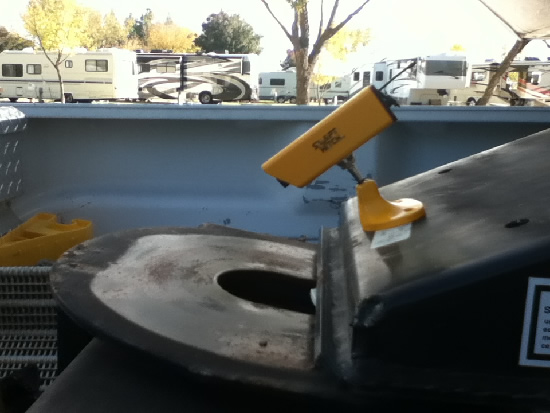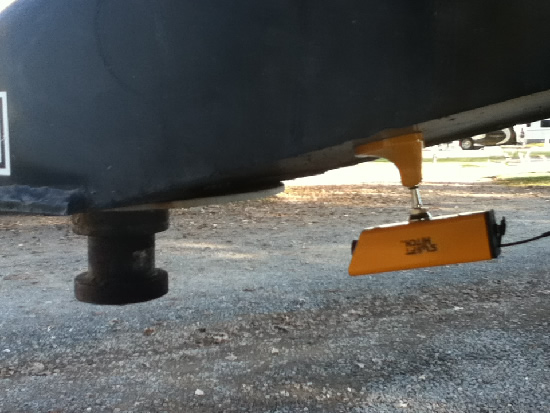SwiftHitch Wireless Backup Camera Hitching Aid : Product Review - Part 2
Okay, now that we have covered the product details, we can get on with the actual review.
Wireless Connection
Being a wireless system makes using the SwiftHitch so easy. And using it as a hitch aid, I had a strong signal with clear, sharp video.
The specifications say the transmission range is 300 feet but I didn't get even close to that range. The range I got was about 50 feet line-of-sight. I believe the short range I experienced was caused by all the WiFi in the campground since WiFi and the SwiftHitch share the same frequency band. These days a lot of RVs in the campground have a WiFi router.
When I mounted the the camera on my spare tire at the back of my 38 foot fifth wheel. I had no signal when standing at the front of the trailer.
To be fair, the wireless system works fine for use as a hitch aid and I have not tested the system at another campground or on another RV.
Hitching Up using the SwiftHitch System
It's pretty clear the SwiftHitch is best suited for travel trailer owners and others who use a ball hitch at the bumper. I recently watched a fellow RVer at the site next to us make several attempts to back the hitch ball under the trailer hitch. I was about to grab my SwiftHitch and head out the door when he finally got it right.
As a fifth wheel owner I have to say from the start that I've never needed a hitch aid other than my rearview mirror. I'd bet most fifth wheel owners would agree. But to be fair to the review I did some thinking about how I could use the SwiftHitch when hitching up.
The first problem was where to mount the camera. With a bumper/receiver type hitch the camera mounts to the tailgate looking down toward the ball mount. Obviously that won't work for any hitch inside the truck bed.
I have an aluminum truck box so the magnet wouldn't work. Even so, I also couldn't reach far enough to mount the camera on center line looking at the hitch. Maybe someone taller with longer arms could reach but I cant. My solution was to mount the camera on the kingpin box which actually worked very well. Watching the video desplay I was able to do a perfect hitch-up.

One key part of a fifth wheel hitch that cannot be seen from the driver's seat is the jaw or locking bar of the hitch. You can assume it is closed by doing a tug test (putting the truck in drive an tugging just a little) but the only way to know for sure the hitch is locked and ready to tow is to get out and look. I thought this would be a good use of the SwiftHitch system.
Mounting the camera up-side down under the pin box looking toward the kingpin gave an excellent view of the pin entering the hitch and the locking bar sliding closed. Yes the image was inverted but turning the receiver upside down gave the image the right orientation and worked fine.

Night Vision
The night vision feature uses several infra-red LEDs around the camera lens which are activated automatically at night or when the camera is in a dark area.
I don't normally hitch up or unhitch after dark. In fact, I cound probably count on one hand the number of times I've done so in 20 years of RVing. But I know many RVers do come and go from campgrounds during nighttime hours. It's easy to see where the night vission feature would be a stress saver.
The LEDs don't cast a visible beam of light but they are bright in the infra-red spectrum. The user manual says night vision has a range of 15 feet but my camera was good for 30 feet at least and lit up a good part of our campsite.
I should clarify that while the infra-red beam is invisible, you will see a red glow from the LEDs when looking at the camera. The red glow is no issue when hitching but could be if you want to use the camera as a temporary surveillance system.
When viewing video in night vision mode the the image on the monitor is black and white.
Continue to page 3 of my review of the SwiftHitch hitching aid.
Watch the Companion Video on YouTube


